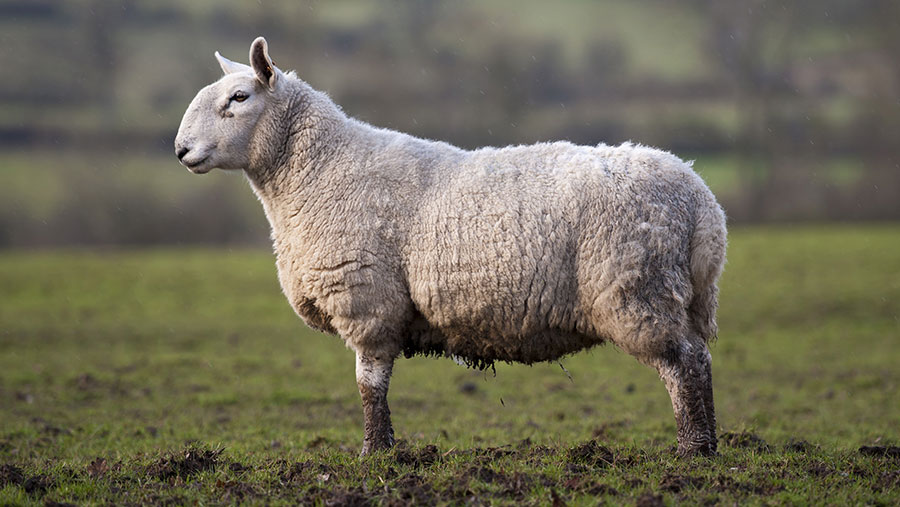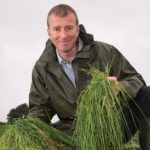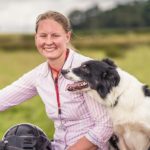Grass Watch: Soggy September brings grazing difficulties
 © FLPA/REX/Shutterstock
© FLPA/REX/Shutterstock Wet, wet, wet. September sees another soggy Grass Watch round-up and with rain causing issues for grass growth and milk production.
The weather has also made for a tricky calving season for our Cheshire columnist and milkers are now being supplemented from Cumbria to Cornwall to try and stretch grazing rounds out.
Robert Craig, Penrith, Cumbria
- Land Total 210ha
- Stock 430 New Zealand/Kiwi-cross cows
- Altitude Ranges from 160-210m above sea level
- Calving Spring calving
| Stocking rate on grazing platform (cows/ha) | 3.28 |
| Growth rate on platform (kg DM/day) | 50 (15 September) |
| Average farm cover (kg DM/ha) | 2,383 (15 September) |
| Yield (litres a cow a day) | 17.5 |
| Fat (%) | 4.85 |
| Protein (%) | 4.03 |
| Milk solids (kg a cow) | 1.55 |
| Supplements fed (kg a cow a day) | 4 plus 2kg DM silage |
| Average rainfall (mm/day) | 81 (21 September) 86 August total |
| Land type | Free-draining sandy loam |
Growth rates have fallen sharply of the past few weeks – mainly due to the endless rain, lack of warmth and sunlight, and some later than planned silage on the platform.

Robert Craig © John Eveson
With a relatively high stocking rate on the milking platform at Cairnhead, growth and current demand are very similar meaning covers are now behind target.
With little opportunity to build average covers further, the milking herd is being supplemented with silage and extra concentrates in an attempt to reduce demand and push the round length out to 40 days.
Milk solids are holding up and remain similar to last year on both farms.
Continuing on a positive note, more cows are scanned pregnant than ever before which offers greater opportunities for next season.
Richard Fryer, Northwich, Cheshire
- Land 127ha
- Stock 230 Friesian cows plus 120 youngstock
- Altitude 40m
- Calving Autumn-block calving, mainly grass-based
| Stocking rate on grazing platform (cows a ha) | 5.3 |
| Growth rate on platform (kg DM/day) | 58 |
| Average farm cover (kg DM/ha) | 2,315 |
| Yield (litres a cow a day) | 21 |
| Fat (%) | 4.7 |
| Protein (%) | 3.7 |
| Milk solids (kg a cow) | 1.76 |
| Supplements fed (kg a cow a day) | 5 |
| Average rainfall (mm/day) | 88 (up to 20 September) |
| Land type | Medium |
A very wet start to September has made this calving season very difficult so far. We have had to house the calving cows during the worst of the weather and feed baled hay rather than our standing hay.

Parts of the calving paddock will need some repair work next spring. However, calving has gone well so far with few milk fevers, plenty of heifer calves and cows coming into milk nicely.
Apart from some baled silage in the worst of the weather the cows are eating grazed grass and cake in the parlour, with the clamps due to be opened around the beginning of October.
This will allow us to keep some grass in the diet until early November – weather permitting.
We plan to close the farm at about 2,200kg DM/ha average farm cover with a fairly flat wedge to avoid having any big covers going into the winter.
In an effort to keep things simple we have made only grass silage for this winter so, hopefully, it feeds well and is palatable, the cows will let us know soon enough.
Mike Miller, Blandford, Dorset
- Land 106ha
- Stock 420 NZ Suffolk-cross Mules and 100 NZ Romney ewes
- Altitude 100m above sea level
| Cows or ewes per hectare | 1.1 livestock units a ha |
| Growth rate (kg DM/ha) | 42 |
| Average farm cover (kg DM/ha) | 2,460 |
| Land type | Heavy Clay |
| Rainfall (mm) | 74 (up to 20 September) |
With autumn upon us, priority begins to shift from lamb finishing to making sure the ewes are in the correct condition and forward planning for the crucial tupping dates.

The ewes grazing rotation is now leaving a higher residue, 1,200kg DM/ha, to maximise energy intake until post-tupping in early November.
Thereafter, another “winter grazing” rotation will reset the pastures for the spring.
The spring-born suckler calves have performed well this year and will be weaned in the next few weeks.
The wet lush grass is being buffered with some barley straw.
We sowed an 18 species herbal ley following whole crop, which is establishing well and I am looking forward to seeing what this diverse sward can provide next season.
Ben Richards, Helston, Cornwall
- Land 146ha
- Stock 280 Jersey-cross Friesians
- Altitude 110m above sea level
- Calving Spring-calving
| Stocking rate on grazing platform (cows a ha) | 3 |
| Growth rate on platform (kg DM/day) | 55 |
| Average farm cover (kg DM/ha) | 2,642 |
| Yield (litres a cow a day) | 8 |
| Protein (%) | 4.9 |
| Fat (%) | 6.6 |
| Milk solids (kg a cow) | 0.92 |
| Supplements fed (a cow a day) | 2kg red clover silage (self-fed clamp) |
| Rainfall (mm) | 45 (up to 20 September) |
| Land type | Free-draining sandy loam |
The rain has continued through August and September. We have not had a huge amount, it’s just wet every day. The cows have missed the sun and the milk has dropped accordingly.

Ben Richards
Silage has been fed since 18 September.
The previous measures had been steadily decreasing and I need to extend the round by 10 days going into autumn.
The last round will start on 10 October and will be stretched with silage to 45 days.
Free-range, grass-fed milk seems to be going forward with the retailers.
This should be a good thing for spring-calving grazing herds feeding 80%-plus pasture diets.
The criteria set to qualify for grass-fed/free-range are laughable though – 120 days out of a shed for six hours.
A cow leaving a shed with a full total mixed ration (TMR)-fed belly will not eat very much of any pasture in six hours.
After standing at the gate for two hours waiting, they can then go back in the shed for more TMR.
This is a marketing disaster that will kill this initiative stone dead, devaluing my milk and any other producer grazing cows.
I feel that we need industry standards in order to promote true pasture-fed milk that the public can trust.
Alice Muir, Buccleuch Estates, Scotland
- Land Langholm Farms: 7,085ha, mainly heather hill with 400ha of permanent grassland
- Stock 1,560 Blackface ewes, 1,100 Scottish Country Cheviot ewes, 900 Greyface/Aberfield ewes and 50 Galloway cows
- Altitude (m) 80-404
| Cows or ewes a hectare | Average 8.8 |
| Growth rate (kg DM/ha) | 37.1 |
| Average farm cover (kg DM/ha) | 2,148 |
| Land type | Peat/clay |
It has been another wet month and the ground is very saturated in places which makes it difficult to graze properly as it poaches before we are getting down to the required level.

Alice Muir
This month we have been focusing on getting lambs away, we are more than halfway through the lambs now, which is good.
We have all our silage done, and hopefully, it will see us through the winter, although we have slightly less than we hoped for due to the weather.
We have had a meeting with innovative farmers on the farm to look at the new species-rich grass leys which we are comparing with various ryegrass mixtures.
We hope we can find a mixture to withstand more stock on this very wet farm.
So far all the mixtures have come through well despite the flooding.
The rotations are now ewes only and the lambs have been shed into their weight groups, the heaviest of which has been put on to the red clover aftermath and are rotating round.
We have sold some hill lambs store but, hopefully, we will see some hill lambs arrive down on to the red clover over the next week or so and the lighter hill lambs will be put on to rougher grass to grow a frame.
Sam Chesney, Kircubbin, County Down
- Stock 150 Limousin sucklers
- Altitude 30m above sea level
| Stocking rate on grazing platform (liveweight kg/ha) | 3,500 |
| Growth rate (kg DM/ha) | 40 |
| Land type | Medium/heavy |
Blue skies from 30,000ft. That was my view from the plane as I flew home from holiday, until I flew over Ireland which was lost under a black cloud.

Sam Chesney © Steffan Hill
We have had treacherous weather in September and, as I saw from the sky, few cattle remain unhoused and crops lie in water unharvested.
This month, grass samples are showing a ME of 11.2MJ/kg DM, crude protein of 18.5% and dry matter of 17.4%. So, not bad, but I expect about 60% use.
Our demand is 83.4kg/ha and we are growing about 40kg/ha
Heifers for beef and bullers have now been removed from the grazing platform as well as all of the lambs and ewes. This still leaves 3,500kg livestock grazing.
The good news is the silage is good and I have plenty of it. Overall, the grass grown so far is, on average, between 10 and 12t/ha with the best paddocks more than 16t/ha.
We have started weaning calves and intend to house 50 next week with the aim to further reduce demand in case the weather in Northern Ireland turns into an Indian summer. I wish.
Gareth Davies, independent grassland expert
Rain continues to dampen grazing hopes
Where is all this rain coming from? As I write this on the 24 September, in my area of South Wales we have had only two dry days this month. Unfortunately, this follows on from a wetter than average August.
All of this rain has led to numerous issues.
First, grass growth has dropped below usual averages for this time of year, and having this happen in August/September is very bad news as you are trying your best to build covers at this point.
Usually, you aim to have your highest covers of the year in late September, which allows you to eke out your grazing well into November. I think a lot of farmers will have struggled to achieve this target this year.
The second issue is the effect on ground conditions – lots of farms are extremely wet at the moment.
This is where farm infrastructure becomes critical, having good tracks and multiple entrances to each paddock can save a lot of damage, using on-off grazing is a useful tool to protect your swards, as is back fencing.
There is no magic formula for grazing mature cattle on wet fields without causing damage, what you need to try to do is to limit the damage as best you can.
The third issue has been grass quality – with all of the rain and lack of sunlight the quality of the grass has been poorer than expected, which has led to a drop in milk on some farms and a drop in growth rates on other farms.
All that can be done here is to know what you have and how much you have, and then balance it out with other feeds if needed.
The final issue is a critical one and that is the clean out of the paddocks. With all of the above going on it is very difficult to hit the required residuals to maintain quality in the subsequent rounds.
It is vital that, between now and the end of the year, each paddock is cleaned out well to set it up for the spring. With this winter already looking like an early one, you need to make sure that your farm is ready for an early turnout.
